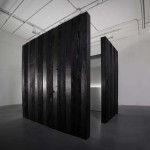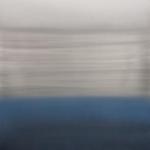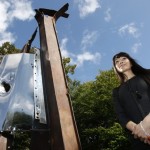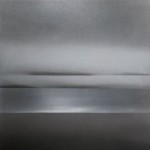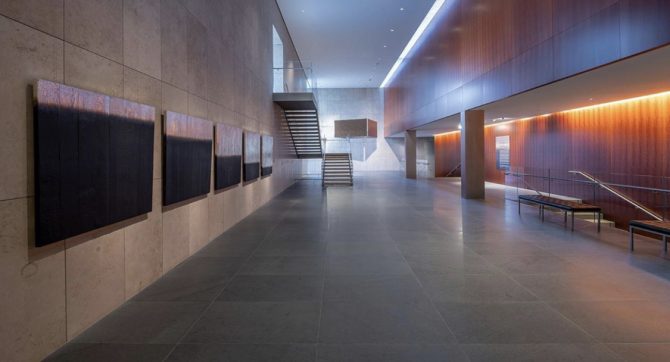
The artist Miya Ando’s solo exhibition at Asia Society Texas encompasses numerous sections of the Yoshio Taniguchi-designed building. “Form is Emptiness, Emptiness is Form” is comprised of several wooden and metal works that Ando has manipulated in such a way that asks visitors to consider time and the pervasiveness of change.
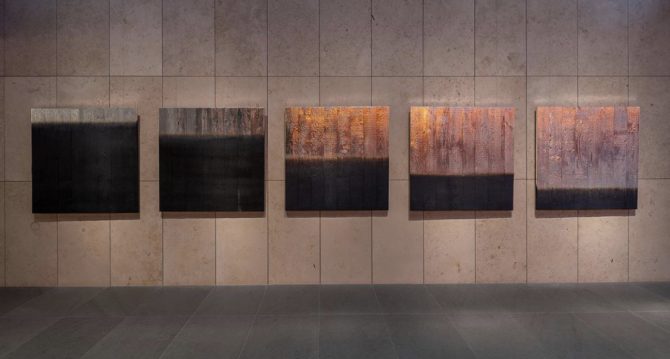
In “Tides (Shou Sugi Ban)” Ando, who is a descendant of Buddhist swordsmiths, uses a traditional Japanese technique of charring wood to enhance its durability. She then applies a chemical process to them, rendering the wood so it charts the fluctuation of elemets in response to gravity. “As the viewer moves through the space, the silver reflects a wide range of colors back as the metal transitions into the rich, velvet blacks of the charred surfaces.”
The exhibition “Form is Emptiness, Emptiness is Form,” a title which evokes Buddhism’s cherished text, the Heart Sutra, is on view at Asia Society Texas through March 29, 2020.


“Mizukagami” is a stainless, hammered steel work suspended from the ceiling, which is intended to capture the shadow of the moon reflected in water. And while the moon too may seem impervious to change, its glittering surface reminds us that, depending on night or day, permanence may not be as singular as we thought.
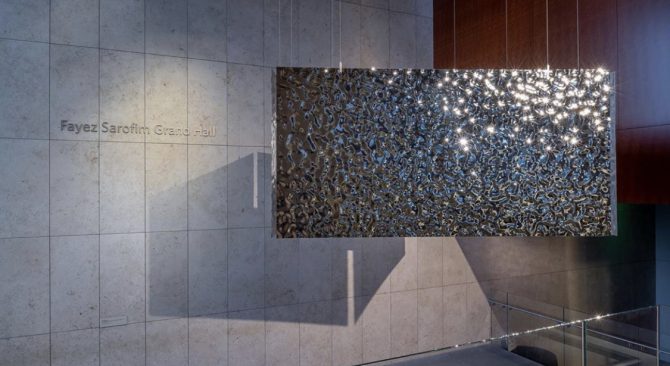
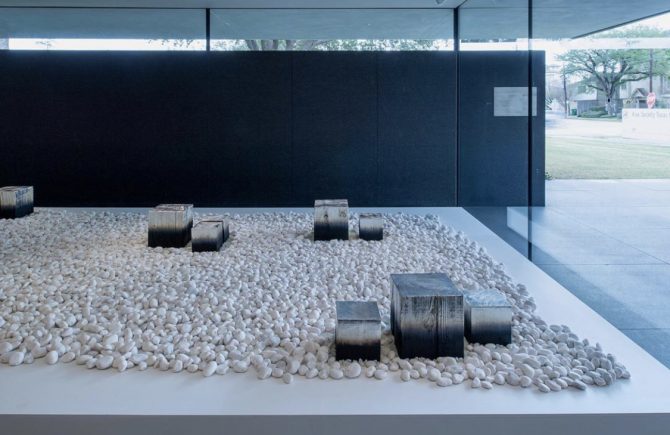
The installation titled “Ryōanji” reinterprets the Zen rock garden
at the Ryōanji temple in Kyoto, Japan. The original garden’s 15 large stones are embodied here with cubes of Ando’s signature charred redwood.



